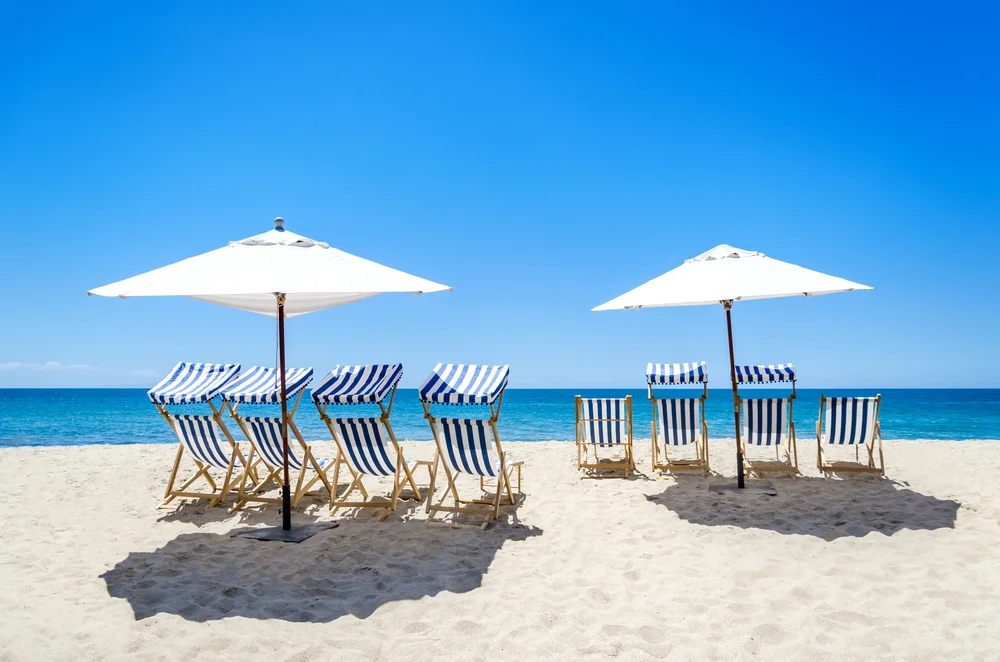Seasonality is a major challenge for brands, whatever their sector of activity. They have to adjust their marketing strategy to take account of the different needs of their audience at different times of the year.
But the summer period presents an additional difficulty: a drop in consumer attention and purchase intentions in verticals that are not directly linked to tourism/leisure.
The key to keeping customers engaged over the summer, but also to generate sales, is to understand and anticipate consumer expectations. But above all, it means offering them engaging and well-targeted brand experiences.
In this article, we explain how the summer competitions can help you overcome the main challenges of the summer period. We’ll also share some concrete examples to inspire your future campaigns.
The main challenges of summer marketing campaigns
Summer is a challenging time for many brands. Many of them see their sales fall drastically or, on the contrary, have to manage a peak in activity. Here are the main challenges they face during the summer months.
1. Attract the attention of less available consumers
Many companies experience a slack period during the summer season due to a decrease in consumer attention. They are often less available (due to holidays, travel, etc.), which has a direct impact on their interactions with brands, particularly on social networks.
During the summer months, engagement rates can drop drastically. A study by HubSpot shows that this drop can be as much as 30% during the summer holidays. It is therefore essential for retailers to adapt their marketing campaigns by offering content that is more visual, less intrusive and more fun.
2. Follow your customers on their summer travels
In summer, consumers also tend to be more nomadic, particularly when on holiday and therefore travelling to tourist areas. For brands, the challenge is to remain available, particularly online or by simplifying the delivery of their products to holiday destinations.
For some sectors, which have a good physical presence throughout the country, the challenge will also be to make these outlets visible. This is the case in supermarkets, for example, by offering geolocated promotions. Sports clubs can also offer summer passes to encourage their users to visit the establishment closest to their holiday destination, or by integrating digital services (such as an online sports application).
3. Meeting different needs during the summer holidays
One of the greatest challenges of seasonal marketing is to understand and anticipate changes in behaviour of consumers at different times of the year. For example, shoppers will be more inclined to spend on leisure activities in summer and more inclined to buy products in winter.
The products and services offered by retailers must therefore be adapted to meet these new needs. To take the example of supermarkets, brands need to take account of the fact that their customers are turning more to fresh products that are easy to eat on the move (ready-to-go).
4. The impact of seasonality on stock management
The challenges of summer marketing campaigns are not limited to companies whose sales are falling. Sectors that experience major peaks in activity can also be hit hard if they are not sufficiently prepared to meet customer demand.
A survey carried out by McKinsey & Company revealed that 70% of retailers observe an overabundance of stock outside seasonal peaks, and 40% of them believe that their stock management could be improved to better adapt to seasonal cycles.
It is therefore crucial for brands to adapt their stock management strategy in line with the seasons. This will help to avoid overstocking or stock-outs during the high season, both of which have a considerable impact on profitability, image and customer satisfaction.
3 good reasons to organise competitions in summer
To meet these marketing challenges and better engage their customers over the summer period, brands can capitalise on gamification.This strategy involves introducing fun, interactive formats (such as competitions) into its communication campaigns.
Here are 3 good reasons to adopt Playable marketing this summer and 3 inspiring examples to get you going!
1. Boost your communication and grab consumers’ attention
Summer is a time when consumers are on holiday and looking for lighter, more entertaining content. By organising a competition, brands can offer them a fun and engaging experience and capture the attention of an audience that is less receptive to traditional messages.
Competitions therefore make it possible to multiply the points of contact, even in summer, boosting the brand’s visibility organically (particularly on social networks).
Example: Showroomprivé’s Summer Trips campaign achieved its visibility objective at the height of the summer season, highlighting Parc Astérix as an attractive partner for generating leads.The results have been impressive, both in terms of participation (177K users in total) and engagement (with over 186K games played and an average session duration of 1min49).
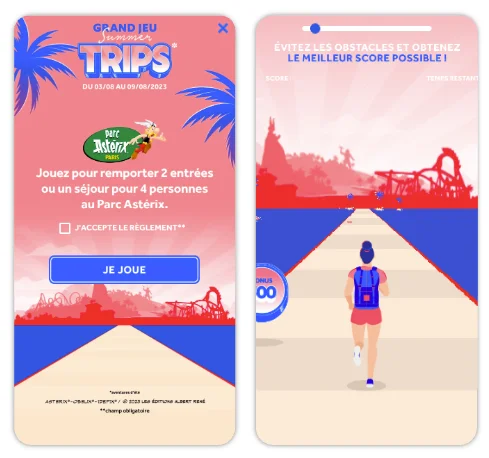
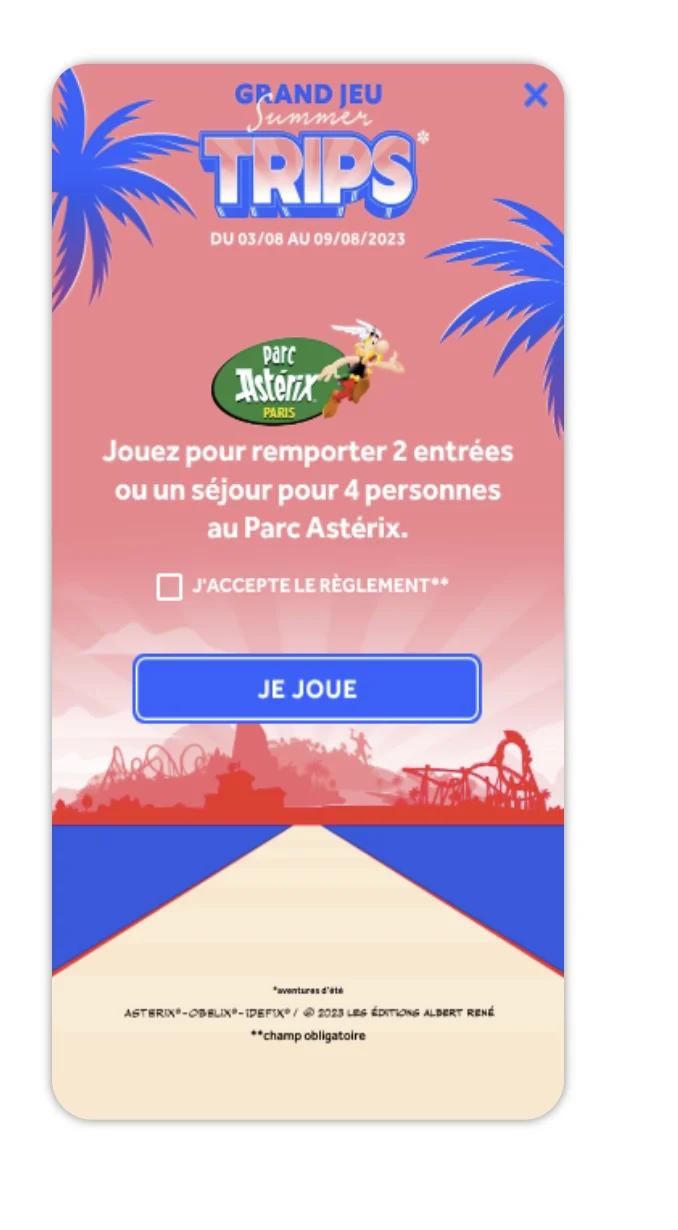
2. Maintain sales during a slower period
Summer can be a slow period for some industries. In this context, competitions are an excellent way of stimulating sales. Not only can the format be used to promote the summer offer in an original way (by encouraging the creation of user generated directly by users as part of a photo competition). But it’s also a way of encouraging impulse buying by distributing time-limited discount vouchers.
Example : Altarea Cogedim has launched its Summer Test campaign to energise its shopping centres during the summer sales period. This
personality test was designed to generate point-of-sale traffic and stimulate purchases by sharing personalised product recommendations. The campaign also recruited new fans, leads and opt-ins, helping to enrich the customer database and to
maximise the impact of the summer highlight.
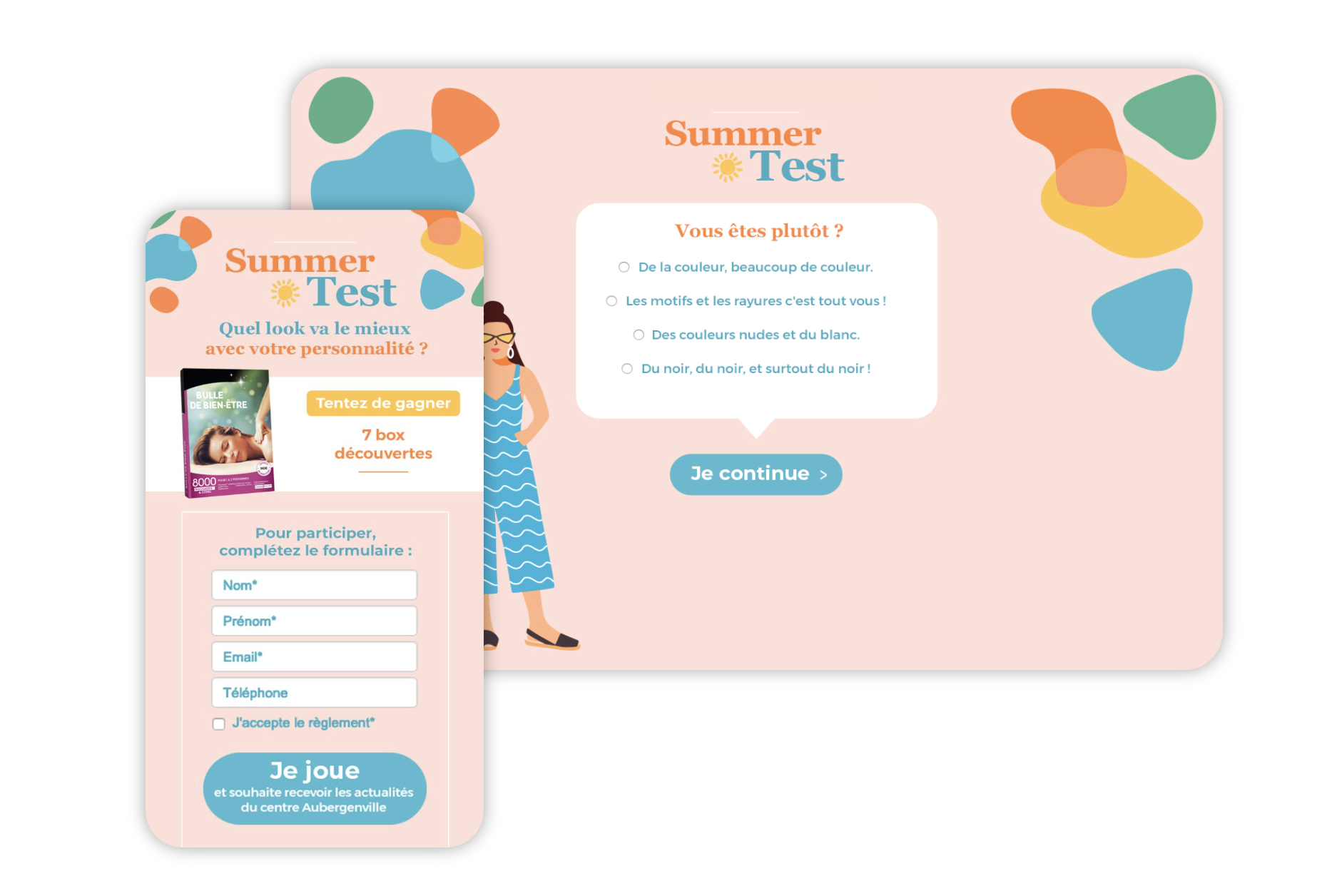
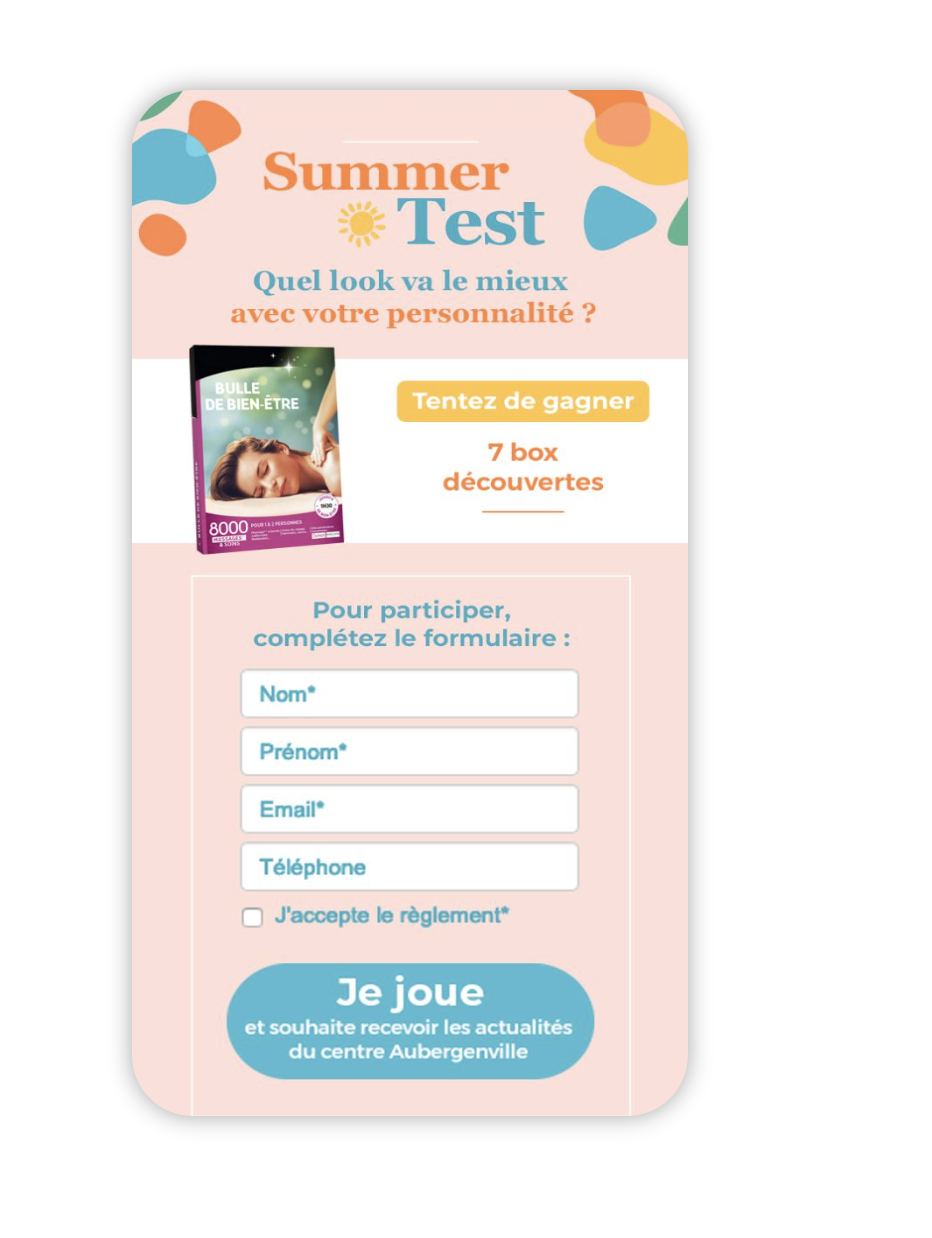
3. Prepare back-to-school marketing campaigns and collect valuable data
Summer competitions can also be used by brands to gather valuable information about their customers (product preference, consumption habits, budget allocated to purchases, etc.) This data can be obtained via the game mechanics themselves (in particular with a Swiper, for example) or using a form (at the start of the course to access the game or at the end of the experience to unlock the reward).
This data can then be used to prepare and optimise back-to-school campaigns and brand communications throughout the year. Using the information collected, the brand can better segment its audience and thus deliver more impactful retargeting campaigns (thanks to personalised content and offers).
Example: The Tape à l’Oeil brand has opted for a summer competition to strengthen its relationship with its customers. The choice of a fun game mechanic such as the Piñata not only boosted the brand’s visibility during the summer period. But gamification also made it possible to collect data and attract qualified leads (thanks to
an opt-in form) which the company could then retarget through an e-mailing campaign, for example.
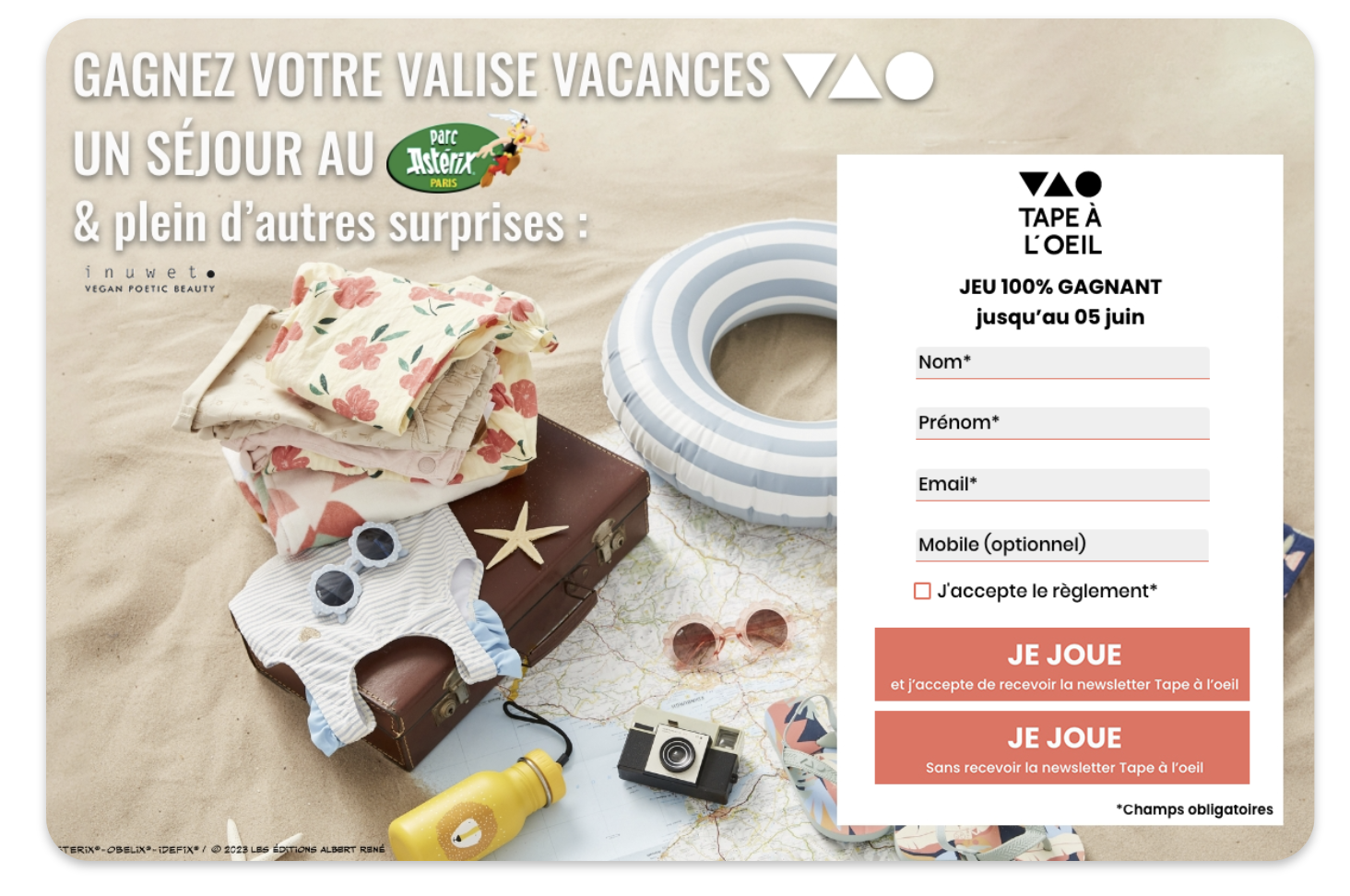
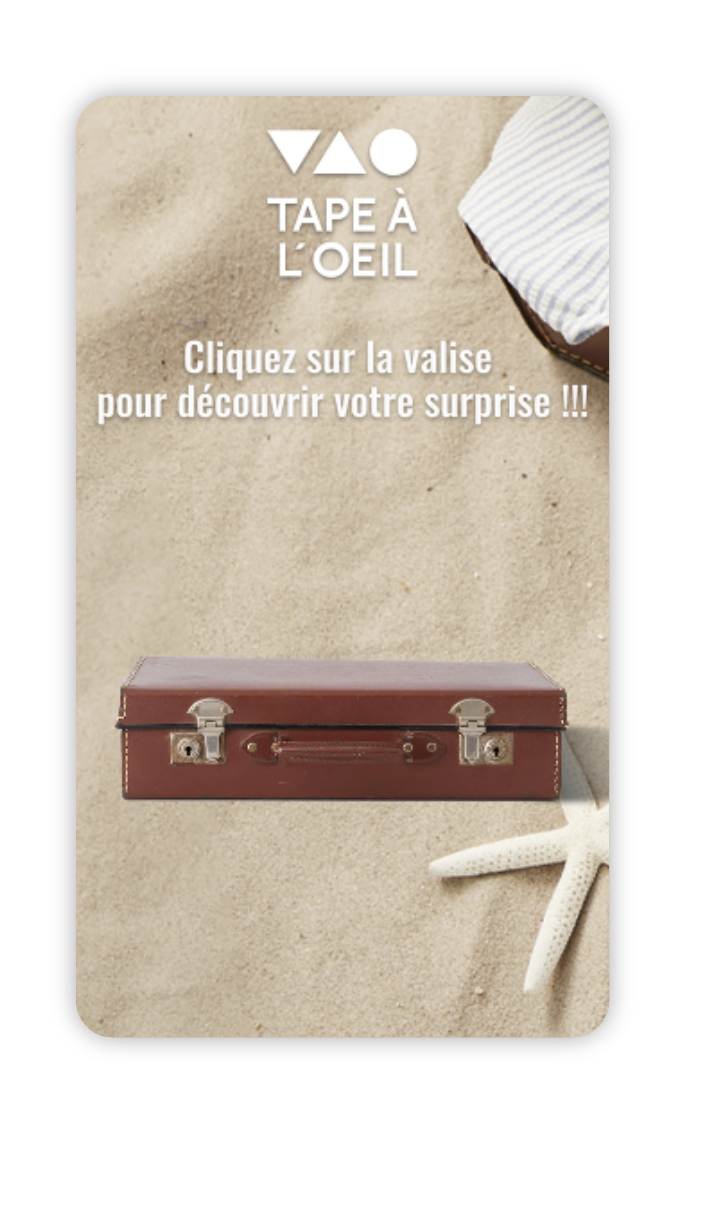
Conclusion
Competitions are particularly relevant in summer to keep your customers engaged, boost your sales and optimise your future marketing campaigns. It’s an ideal format for the summer period, making your communication more dynamic and more fun. Discover
our marketing game formats and boost your visibility and revenue even during the summer holidays!


